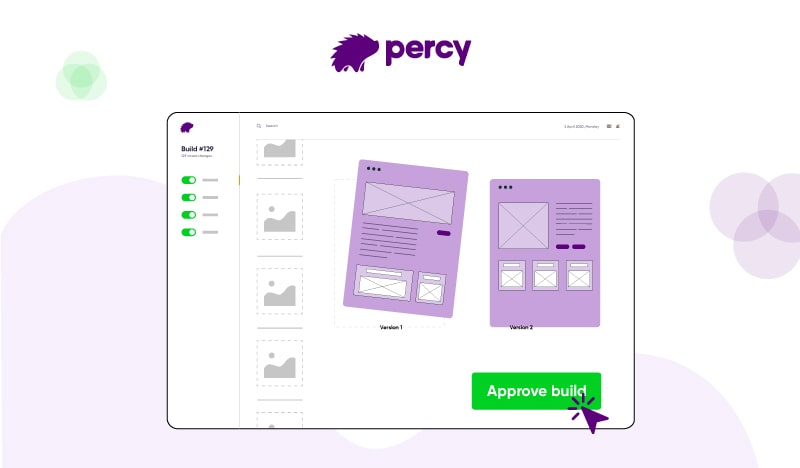Google recently announced that page experience would factor more heavily in search rankings from June 2021 and take a leading role from August 2021, with a specific focus on Core Web Vitals. Let's take a look at what this entails.
How Core Web Vitals will determine your Google search rankings
In today’s online world, not only do websites need to provide relevant and meaningful content, but they also need to engage and offer seamless experiences to their visitors. User experience or UX is now the priority concern, especially for businesses that rely heavily on their online presence for lead acquisition and sales. But how can we measure something as ephemeral as a user’s feelings and personal impressions of a website’s performance and turn them into data we can track, measure, and optimize? That’s where Google’s page experience signals come with the aim of codifying how a search engine can evaluate how well a visitor is interacting with a site or a single page. As part of this, the concept of Core Web Vitals is introduced and applied to web optimization in parallel with the previously-known UX-related factors.
Why are Core Web Vitals important?
First, we need to understand what page experience signals are. Page experience signals are factors that Google considers important metrics of how users perceive the experience when interacting with a specific web page. These signals go beyond the page’s information value and content quality and focus on the user experience – and Google plans to make page experience an official ranking factor. We all know that if the first impression doesn’t go smoothly, there is little to no chance that you’ll get to make a second one. As your website is considered your company’s online presence, if page experience is not taken seriously, it could result in lower brand awareness and conversion rates, leading to difficulties in acquiring customers through a promising, authoritative channel.
While there are other factors in page experience (like mobile-friendliness, safe browsing, HTTPs, No Intrusive Interstitials), Google denotes the Core Web Vitals as the most important, which is why they will become key factors in evaluating user experience on a web page. While it’s good to be a perfectionist and work on all the signals equally, it’s undeniable that companies and enterprises only have limited resources and time to optimize their sites, so it’s good practice to focus on those factors that will take up a big chunk of your page’s overall UX score. Google announced that the page experience signals as a part of the ranking algorithm would roll out in May 2021, which means there’s still time for you to catch up and adjust. You can check out the announcement here.
What are the Core Web Vitals?
The Core Web Vitals are 3 metrics focused on page speed and user interaction.
Largest Contentful Paint
This measures how long it takes to render the largest element of a page (the time until it’s fully visible), counting from the moment a user calls the URL. A good LCP score is below 2.5 seconds.
Since you can decrease your LCP score by simply improving your page speed, there are a few ways you can optimize in order to get a better evaluation from Google. For example, setting up lazy loading, using a CDN (Content Delivery Network), upgrading your web-host or even strategically removing large elements from your page. Whatever you do, make sure your page is decluttered and “lighter”, and focus on what’s most important.
First Input Delay
This measures the time from a user’s first interaction (click on a link or a button) to the time when the browser actually responds to that interaction. It can help quantify the user experience of interacting with an unresponsive page. Basically, FID is used to measure the interactivity of a page – the faster the response, the more seamless the user experience is. A good FID score is below 100ms.
To provide a better interactive experience for your users and optimize your site for a better FID score, it’s a good idea to reduce the amount of JavaScript that is loaded in one page or use a web worker to run JavaScript on a background thread.
Cumulative Layout Shift
This indicator measures how visually stable a page is during the loading phase. The more unexpected layout shifts a page experience during loading, the harder it will be for a user to interact, and the worse their experience will be. The aim for a CLS score would be 0 (meaning there is no shift, only perfect visual stability), but we can usually aim to minimize it to less than 0.1.
Since ads, embeds, and iframes are known to cause layout shifts in web pages, in order to get CLS as close to 0 as possible, we can add new UI elements below the fold, reserve ad slots’ sizes before adding the ad library, or setting fixed size attribute dimensions for media.
Usability testing would be one of the greatest methods that can help you align with these Core Web Vitals metrics.
How can we measure Core Web Vitals?
All 3 pillars of Core Web Vitals contribute to quantifying user experience, creating data that can be used for further analysis and optimization. They help us to understand how our web pages are performing and find out exactly where the problems are, how we can improve, and which goals we need to achieve. Now, you might be curious as to which tools we can use to check and measure these metrics. Basically, all web performance test and analytics tools measure FID and LCP, and most also measure CLS. To name the most widely known, you can use tools by Google like the Chrome User Experience Report, PageSpeed Insights, or Search Console (Core Web Vitals report).
Now that you have all the data, you should be able to see the full picture and know which direction you should head in – enough information to be used as the basis for an effective action plan. If you still have trouble figuring out what you should do next, or what to prioritize with your limited time and resources every time Google adds something to its ranking factors, Niteco is here to help. Niteco’s web development and SEO experts live and breathe site optimization. Not only do they understand your site and your goals, but they also know how to make any search engine (Google, Bing, etc.) work for you, not against you. Contact us today to get your plan up and running.
to transform your business and drive results?



